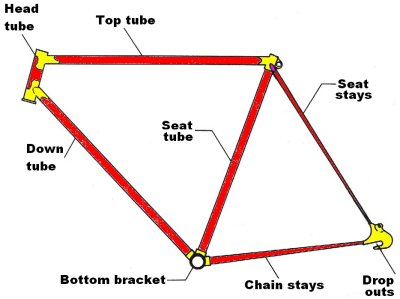Deciding where to go on your bicycle touring adventure and planning the route is an enjoyable part of the experience. Maybe there’s a part of the country or world you have always wanted to visit, and doing it on a bike can be a profound pleasure.
But…how does one know what the roads are like?…Is the area safe?…..What about auto traffic?….
There are some good sources for route planning.
The Adventure Cycling Association publishes excellent maps outlining almost 41,000 miles of bicycle routes which have been researched and refined over the last 4 decades. These have descriptions of what to watch out for and how to plan. They also offer supported trips, a Cyclist’s Yellow Pages, and a print publication that always has great useful articles.
Google Maps is another good resource. Just click on any area in the world and you can look at the topography, with elevations included, or a satellite view, or the straight up map view. This application also allows you to view a photograph at almost any point along most roads, by simply dragging an icon, placing it on the highlighted road and dropping it. Very, very cool. In Google Earth one can “fly” over the route.
Another idea is to use routes identified by companies which specialize in guiding supported tours. These routes are usually researched thoroughly and a person can find information on camping and other places to stay, where to eat, topography, traffic, etc.
Crazyguyonabike.com is another fantastic resource. This is a free, independent website for hosting bicycle touring journals, forums and resources. The content is contributed by people from all over the world. There are currently (2010) almost 5000 journals and over ½ million photos contributed by people doing their own bicycle tours. Many of these are updated daily by people during the tour, so you can follow them every day!
When planning the route, take into consideration how much time you have, your fitness level, the fitness level of your traveling partner(s) if any, and expected conditions such as weather and elevation changes. Consider where you want to end up each night. With these things in mind plot out your daily mileage, remembering that, if you are self supported, you will be carrying additional weight. So, even if you are in great shape and regularly do 80 to 90 or more mile training rides, those are not realistic numbers for touring. Some days 40 miles might feel like an epic ride. Other days 100 miles will be doable. Allowing plenty of time to complete your route,…more than you think you need…will give you time to stop at points of interest, or even just (gasp) relax! Remember, this is supposed to be fun.


